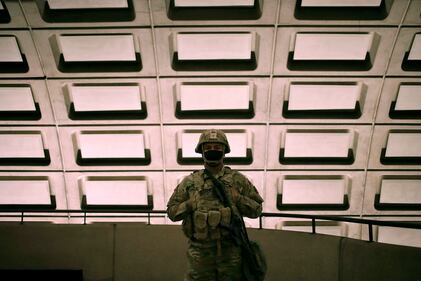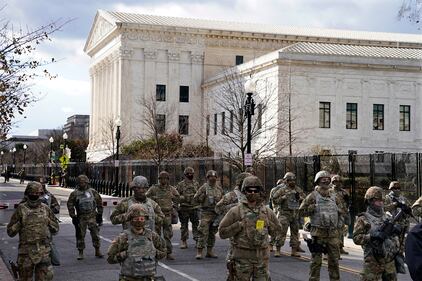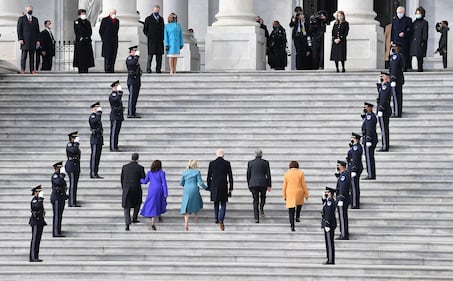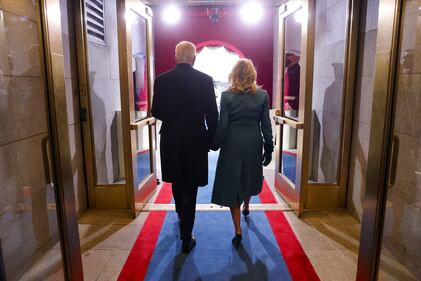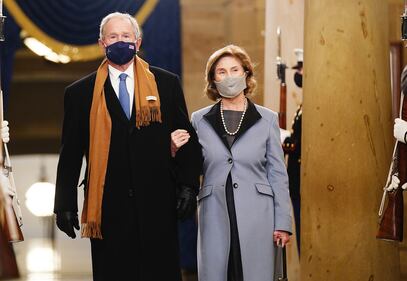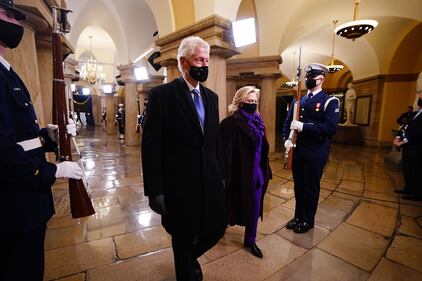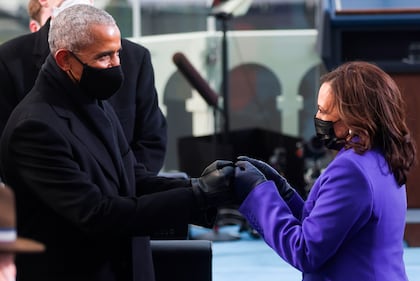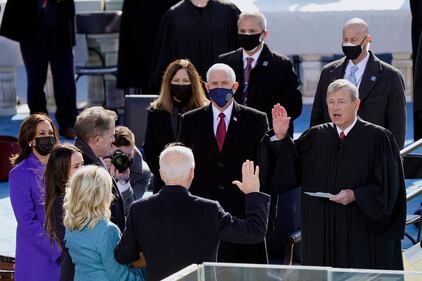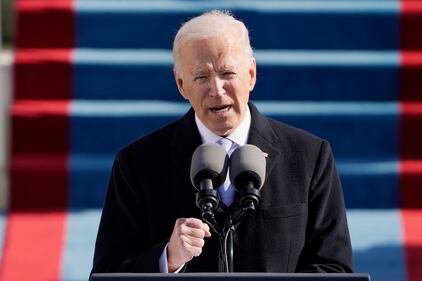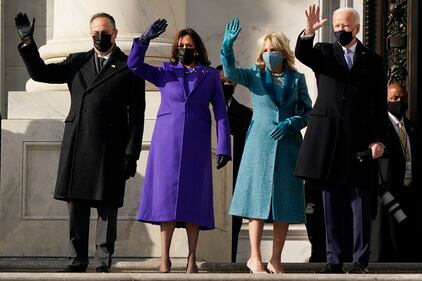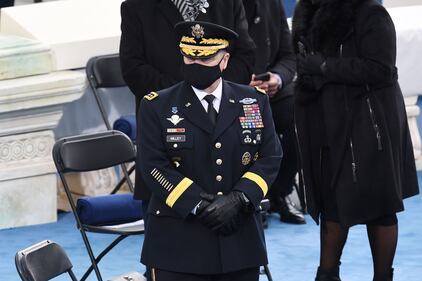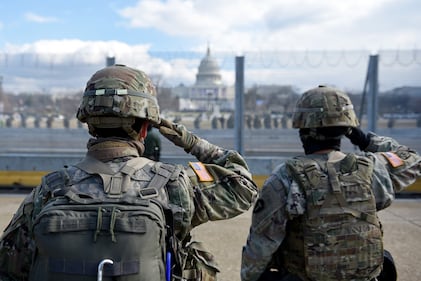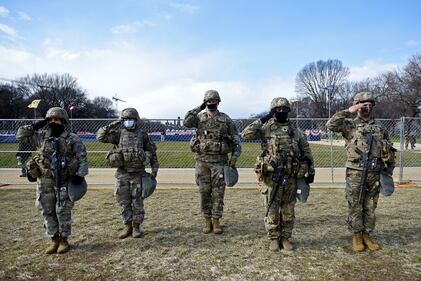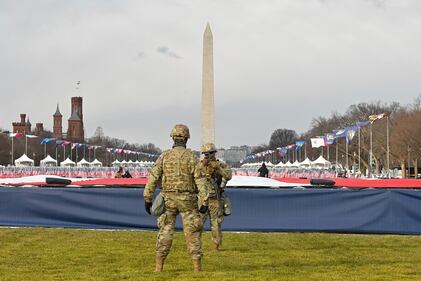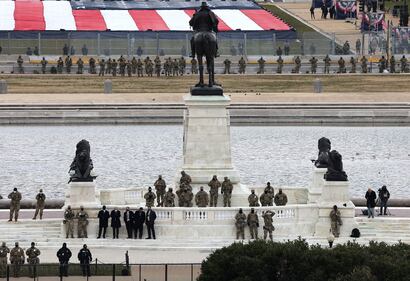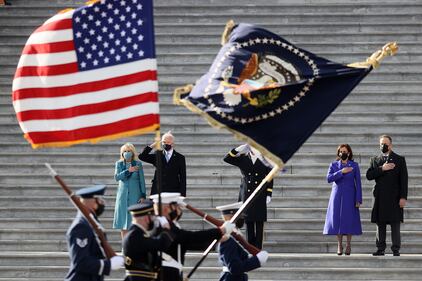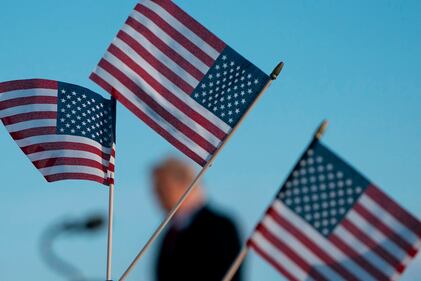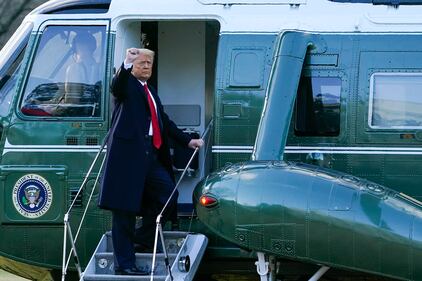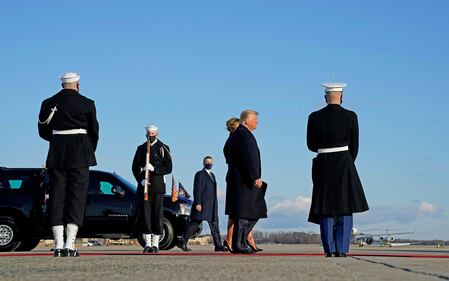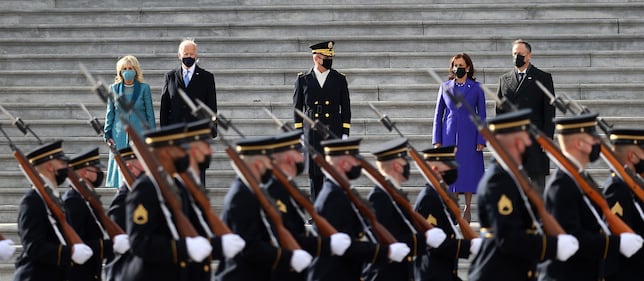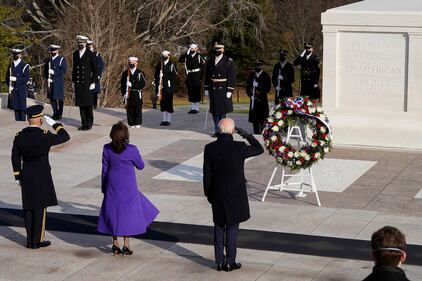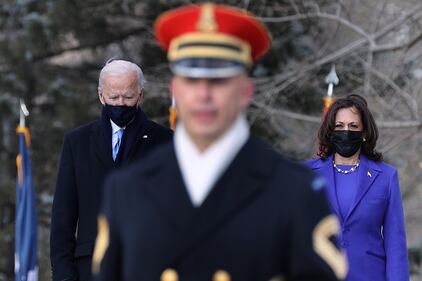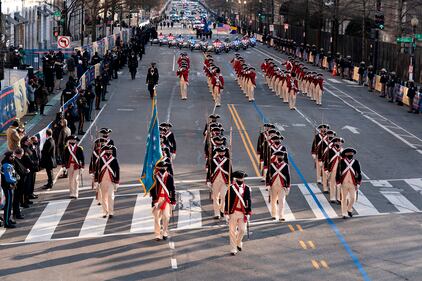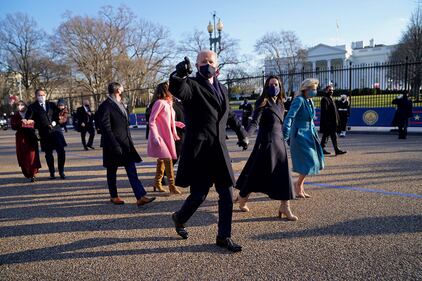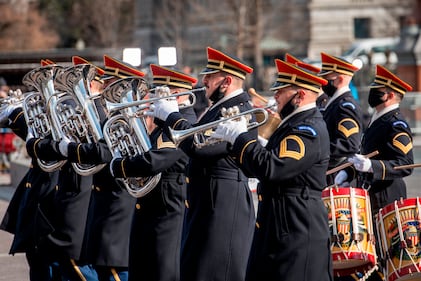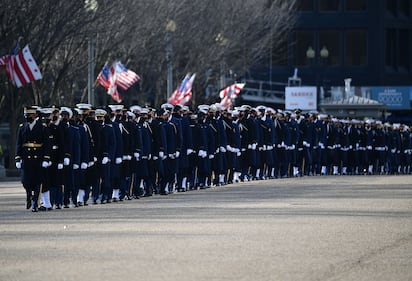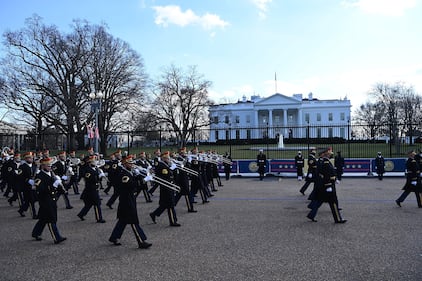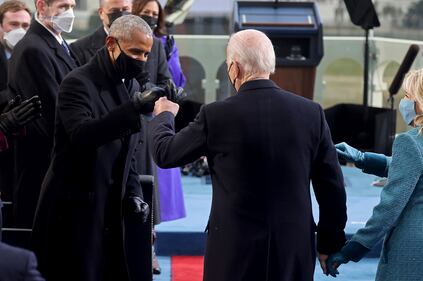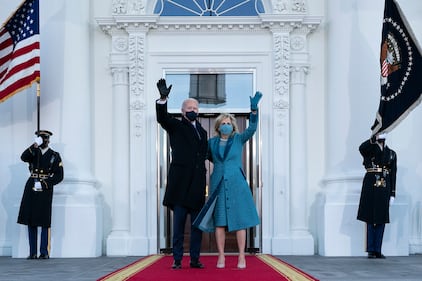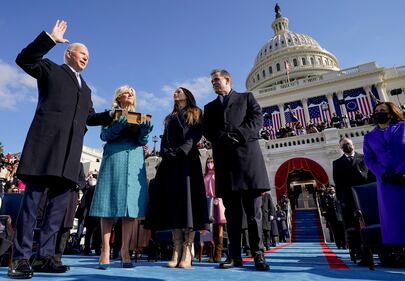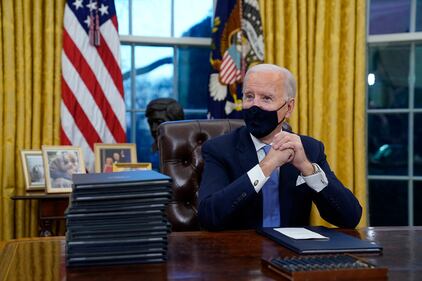Secretary of the Army Ryan McCarthy stepped down Wednesday as the new Biden administration took charge, bringing to an end the three-and-a-half years McCarthy has served as either the highest or second-highest ranking civilian within the Department of the Army.
McCarthy’s tenure was marked by ambitious modernization initiatives as the Army orients away from nearly two decades of counter-insurgency conflict and toward competition with other global powers. But domestic issues, including civil unrest and the Army’s handling of missing soldiers and sexual assaults, have drawn increased scrutiny in recent months.
Assistant Secretary of the Army John Whitley, the service’s comptroller, will serve as acting secretary until President Joe Biden selects nominees to lead each of the services and they are confirmed by the U.S. Senate.
McCarthy, a veteran of the 75th Ranger Regiment, said in an interview this week that he hasn’t yet sketched out his next career plans. His unique role in helping manage the National Guard in Washington, D.C., has required his focus to remain on the inauguration, he said.
Security for the presidential transition has been a top priority in the aftermath of the Jan. 6 riot at the U.S. Capitol by a mob of Trump supporters. In recent days, the FBI worked to vet 25,000 Guard troops who came to D.C. to help ensure a peaceful inauguration. Twelve troops were ultimately flagged and sent home, though few details have been offered as to what raised suspicions about them.
“It’s always a broad concern that soldiers are thoroughly vetted for any type of extremist threats,” McCarthy said Monday. “[On] Jan. 6, there were a handful of service members across the department that had participated in the riot. So, for all the hosts of those reasons, we’re running all the names through the FBI database.”
In a statement Wednesday, Army Chief of Staff Gen. James McConville bid farewell to his civilian counterpart. He emphasized McCarthy’s efforts to field new equipment to formations, while acknowledging the pandemic and protests this spring and summer that frequently tapped National Guard soldiers.
“His inspirational leadership and unwavering integrity have spearheaded the most ambitious Army modernization efforts since the 1970s,” McConville said in his farewell message. “He instituted reforms that put the Army’s People First, and guided the Army through some of the most challenging times affecting the Nation and our society in recent memory.”
When McCarthy was sworn in as secretary in late September 2019, many of his priorities carried over from his previous two years as the Army undersecretary.
“The agenda has been consistent for over three-and-a-half years that I’ve been here,” he said, noting the focus on combat training center rotations and increasing unit readiness. “Over four years ago we had about two Brigade Combat Teams ready, [and] today we have north of 27 at the highest levels of readiness.”
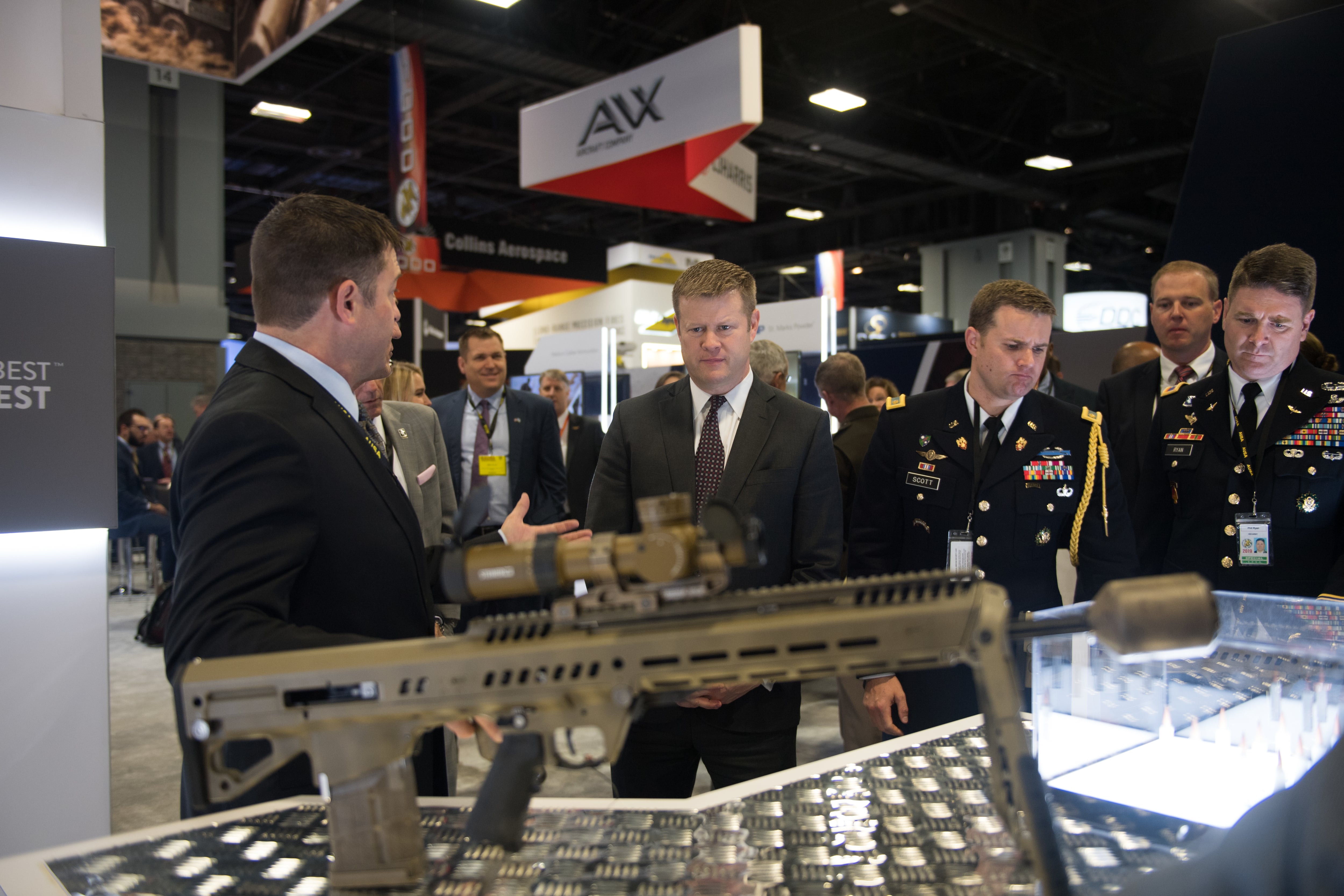
The Army has also stood up a new four-star Futures Command and made it a priority to develop long range precision fires, next generation combat vehicles and a future vertical lift platform, among other initiatives. The service is on its fifth budget in a row that’s investing in those programs, McCarthy noted.
“You’ll see many of [those technologies] entering the formation, literally in soldier’s hands, this fiscal year and next,” McCarthy added. “The next two to three fiscal years, you’ll see tranches of these capabilities landing, enhancing our long range precision fires, our networks, missile defense and soldier lethality in particular.”
The Army also introduced a new force generation scheme this fall, dubbed the “Regionally Aligned Readiness and Modernization Model,” that will allocate Army units to different regions of the world in roughly one year.
The new model will give units expertise in the specific theaters where they would deploy during an actual conflict and allow them to stockpile new equipment for those clashes. It will also offer far more predictability so soldiers can, for instance, receive the new Next Generation Squad Automatic Weapon and IVAS goggles, according to McCarthy and other senior leaders.
“If you have predictability of where the units are going to be in the cycle, whether they’re deploying or home on re-fit, that’s when you will know what units will be able to equip or absorb new equipment,” McCarthy said. “Nineteen years of sustained combat operations have made it hard for us to have predictability and stability” necessary to receive that new equipment.
The modernization and readiness priorities were focused outwardly, with the goal to be able to fight and win against near-peer adversaries like Russia and China in the coming decades. But the past year in particular has been mired in domestic trouble.
This spring, the global coronavirus pandemic required the activation of thousands of Guardsmen and stymied Army training rotations and deployments, including a division-sized exercise in Europe. Trouble continued this summer, when the murder of Spc. Vanessa Guillen spotlighted the failings of leadership at Fort Hood, in Texas.
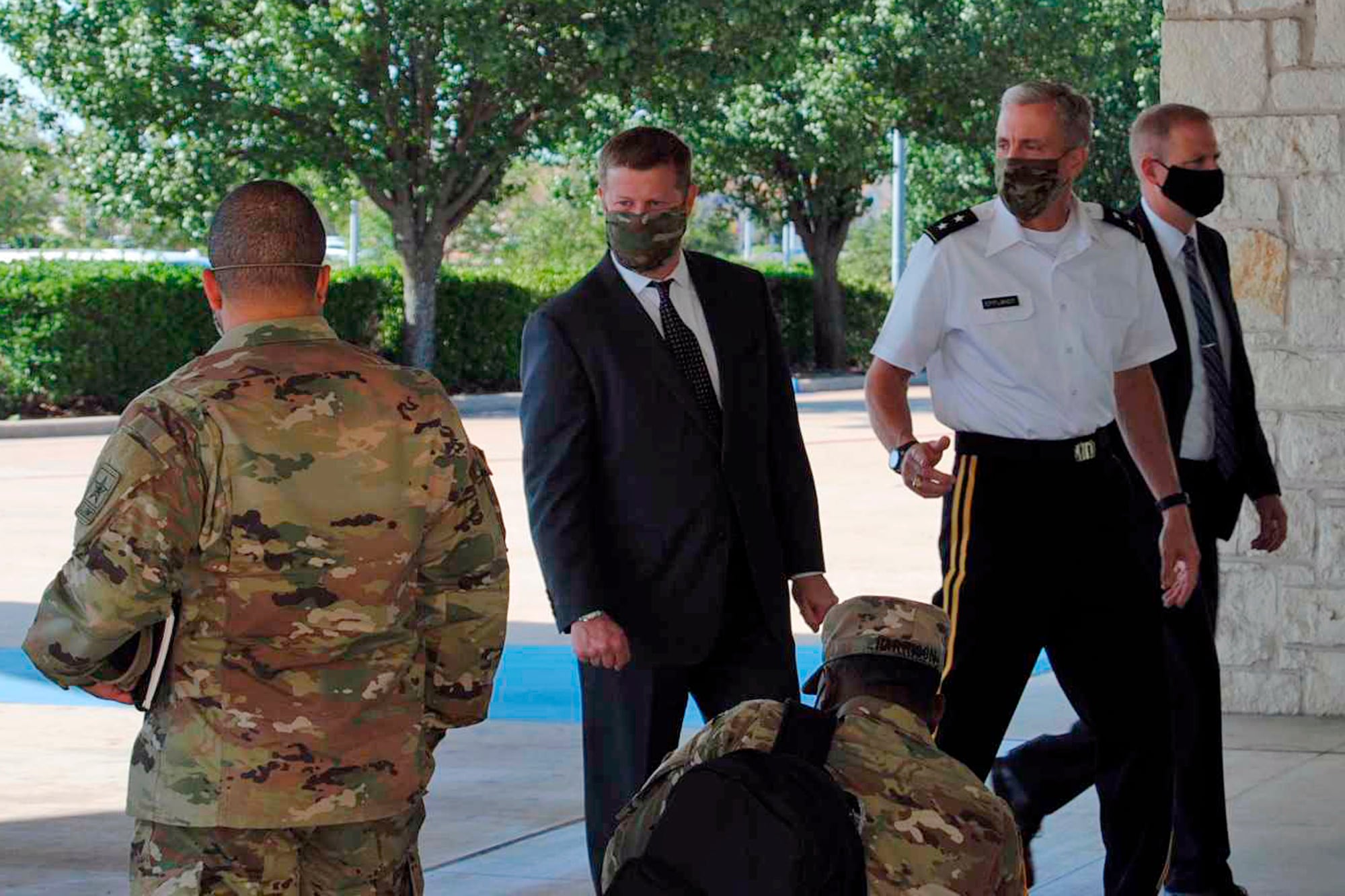
An independent committee determined there was an environment at the post that allowed sexual assault and harassment to proliferate, and that Army CID agents assigned there were under-experienced and overworked — a problem that agents say exists across the force.
“Using independent panels is an extraordinary step, quite frankly,” McCarthy said of the decision to tap five experts from outside the Army to review Fort Hood’s command climate. That independent committee was “objective” and provided “a holistic view from the outside, [with] fresh eyes,” he added.
Fourteen leaders at Fort Hood, from the deputy commander down to the squad level, were relieved or suspended in the wake of that independent committee’s review. Other investigations related to Fort Hood remain pending.
Army Futures Command boss Gen. John Murray was tasked with carrying out an in-depth investigation into the actions taken by the post’s chain of command following the disappearance of Guillen. The 6th Military Police Group, which oversees CID agents at Fort Hood, is also the subject of an investigation.
Also this summer, the killing of George Floyd, an unarmed Black suspect, by Minneapolis police sparked nationwide protests, including within the nation’s capital. The deployment of Guard troops to D..C. during protests and riots was met with criticism, especially after two D.C. Guard helicopters flew low over protesters on the night of June 1 in an apparent effort to intimidate and scatter them.
McCarthy, who was technically in the chain of command for those Guard pilots, could not comment on the investigation into the incident. DefenseOne reported this fall that the D.C. Guard and the Defense Department Inspector General’s Office remain at odds over who should take responsibility.
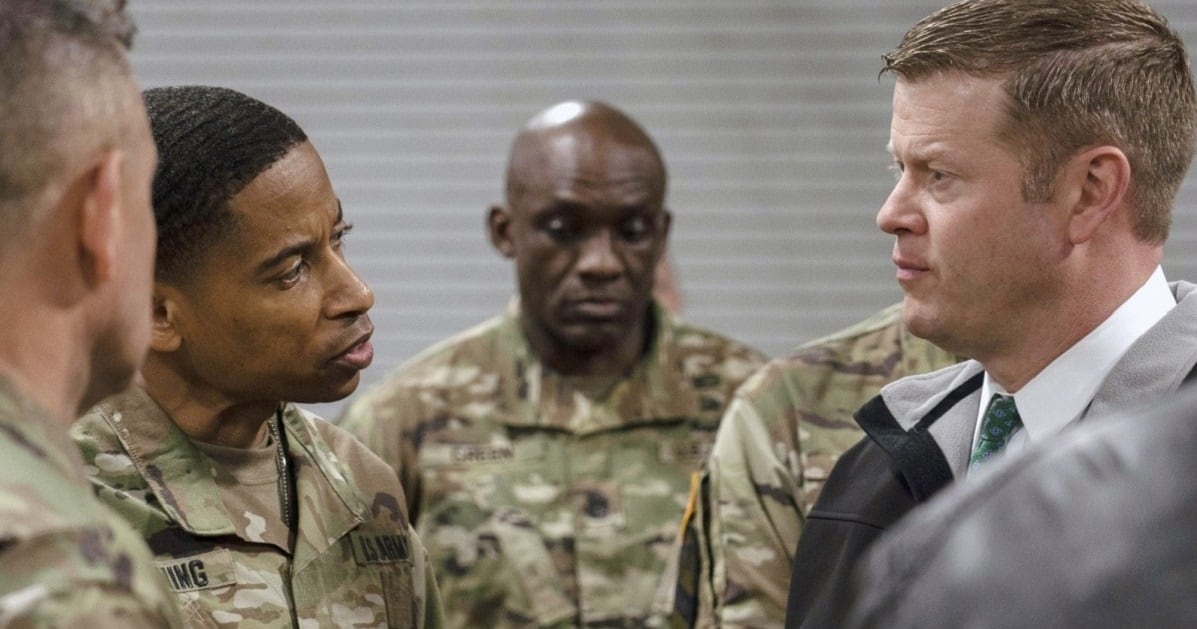
Guard mobilizations were far more welcomed by the media and citizens of the district early in 2021 — after the Jan. 6 riot at the U.S. Capitol.
The Associated Press reported that at least 22 current or former members of the U.S. military and law enforcement have been identified as being at or near the Capitol building during the riot.
The presence of veterans and active troops has caused some to urge the military to clamp down on extremism in the ranks, an amorphous problem that can be difficult to identify in practice.
“We don’t really have a thorough understanding of just how many people were there,” McCarthy said of the Capitol riot. “We’re looking at this very hard and working with federal law enforcement to find out if there were others, over and above the ones that have been reported to us.”
Identifying any more soldiers who participated in the riot has been made a priority for Provost Marshal Maj. Gen. Donna Martin, according to McCarthy. The provost marshal relies on the FBI and other agencies that monitor extremist groups, often through their online footprints, to flag soldiers engaged in extremist activities.
“If this does truly exist, we have to go after it,” McCarthy said when asked whether the Army needed to change how it is pursuing extremism in the ranks. “We turn to our experts to help us look at this type of problem set, how to understand it and where to look for it. And if necessary, we’ll put the appropriate resources in place to canvass the institution.”
Image 0 of 33
Kyle Rempfer was an editor and reporter who has covered combat operations, criminal cases, foreign military assistance and training accidents. Before entering journalism, Kyle served in U.S. Air Force Special Tactics and deployed in 2014 to Paktika Province, Afghanistan, and Baghdad, Iraq.


